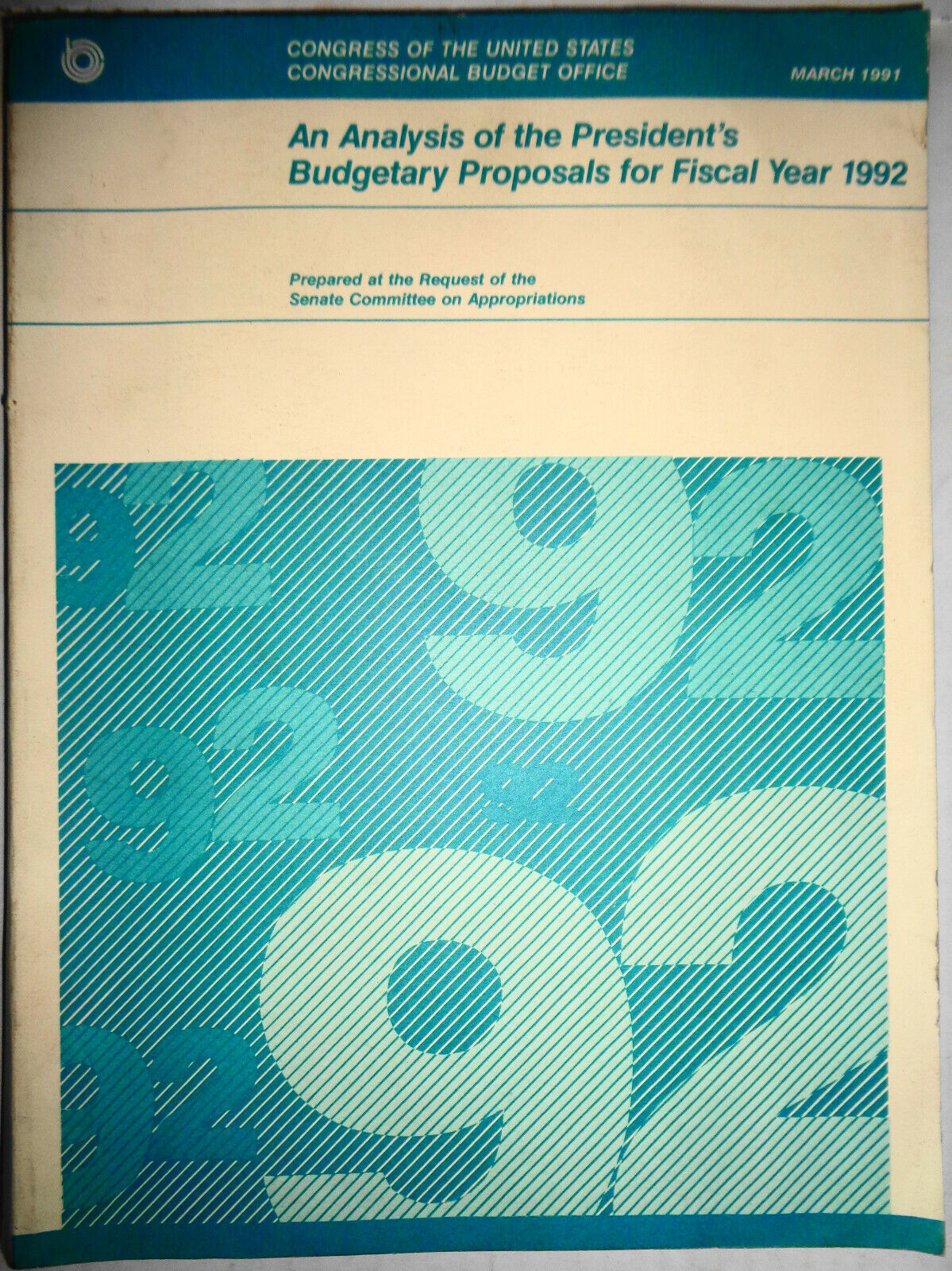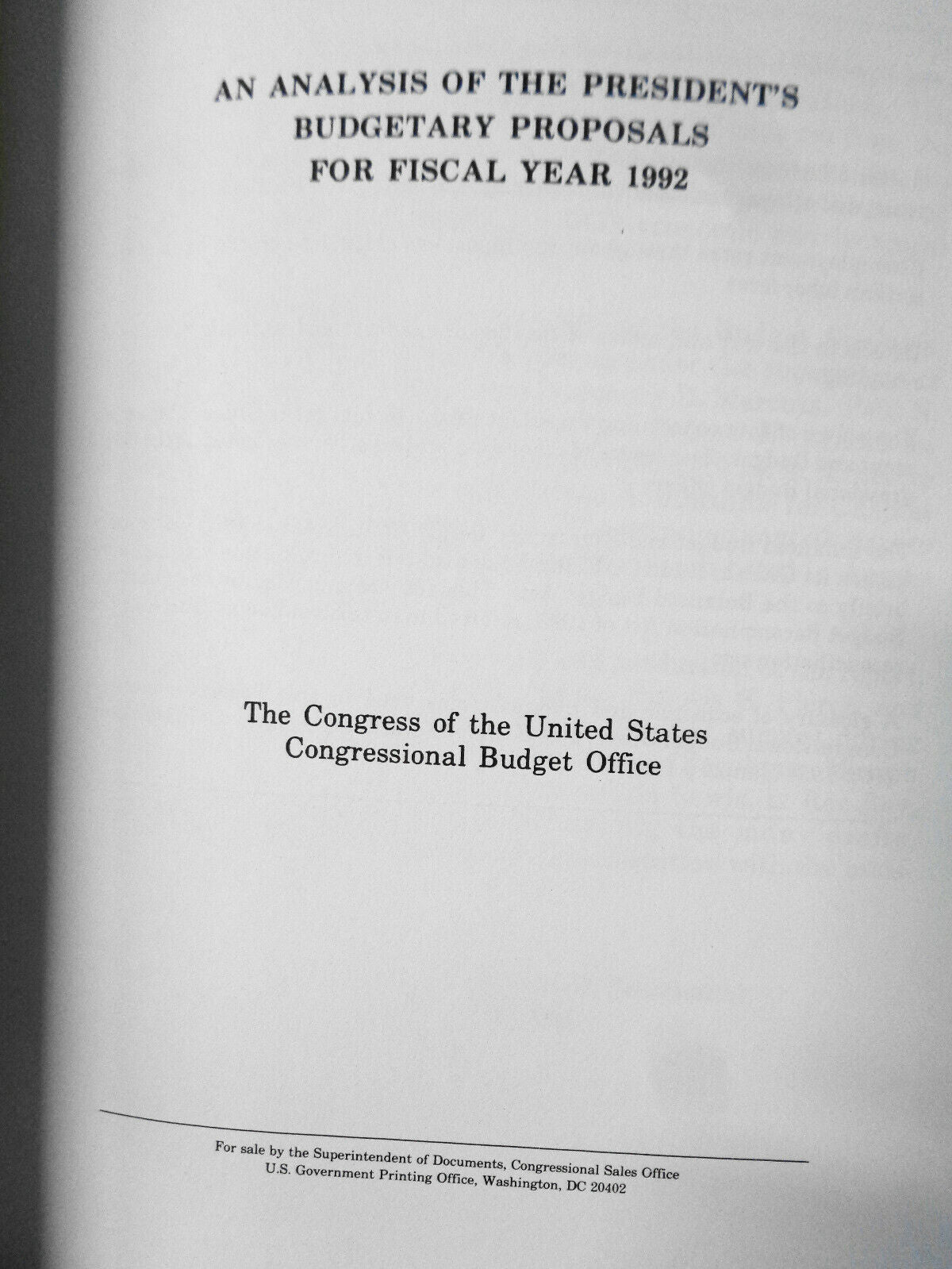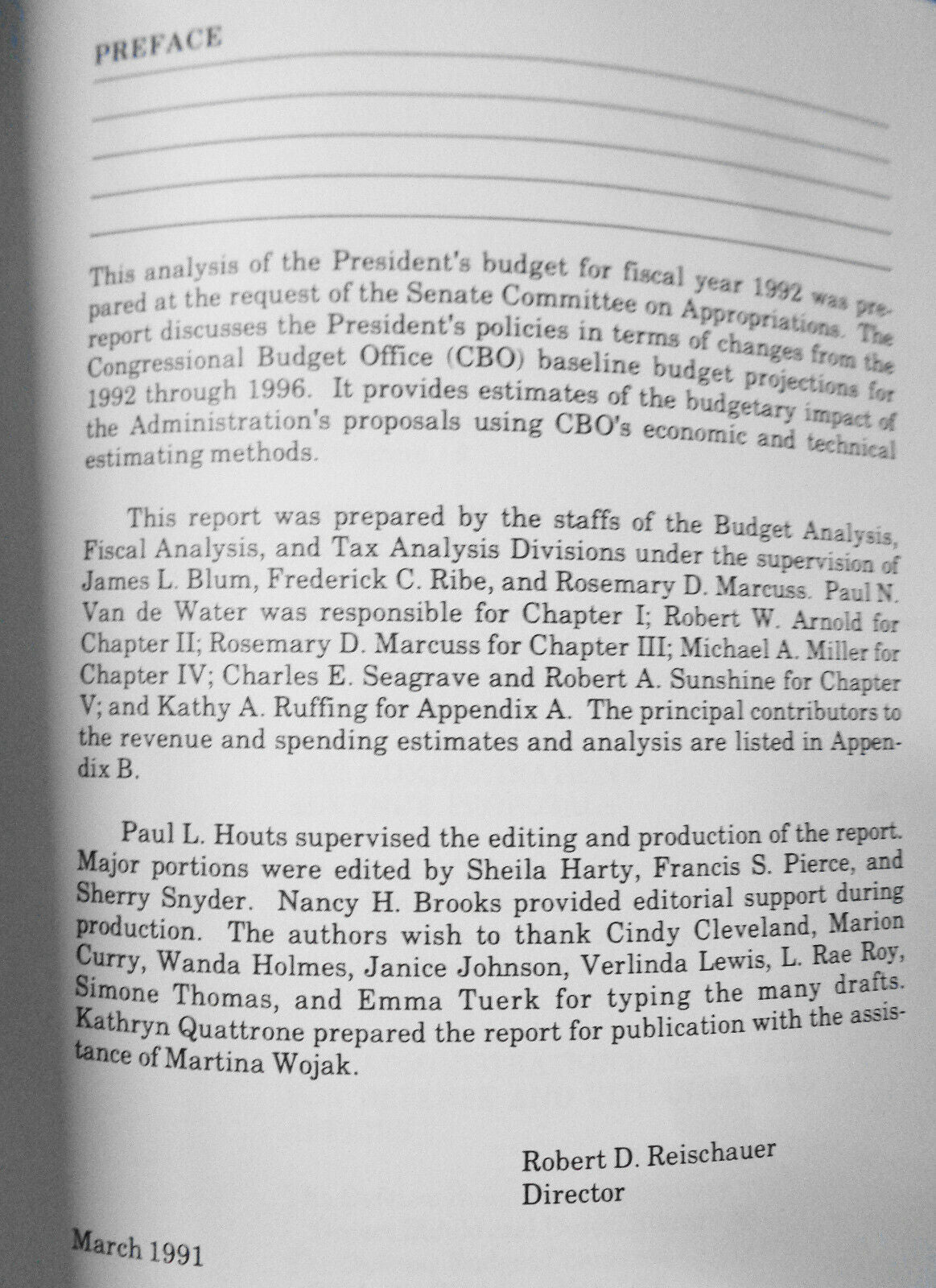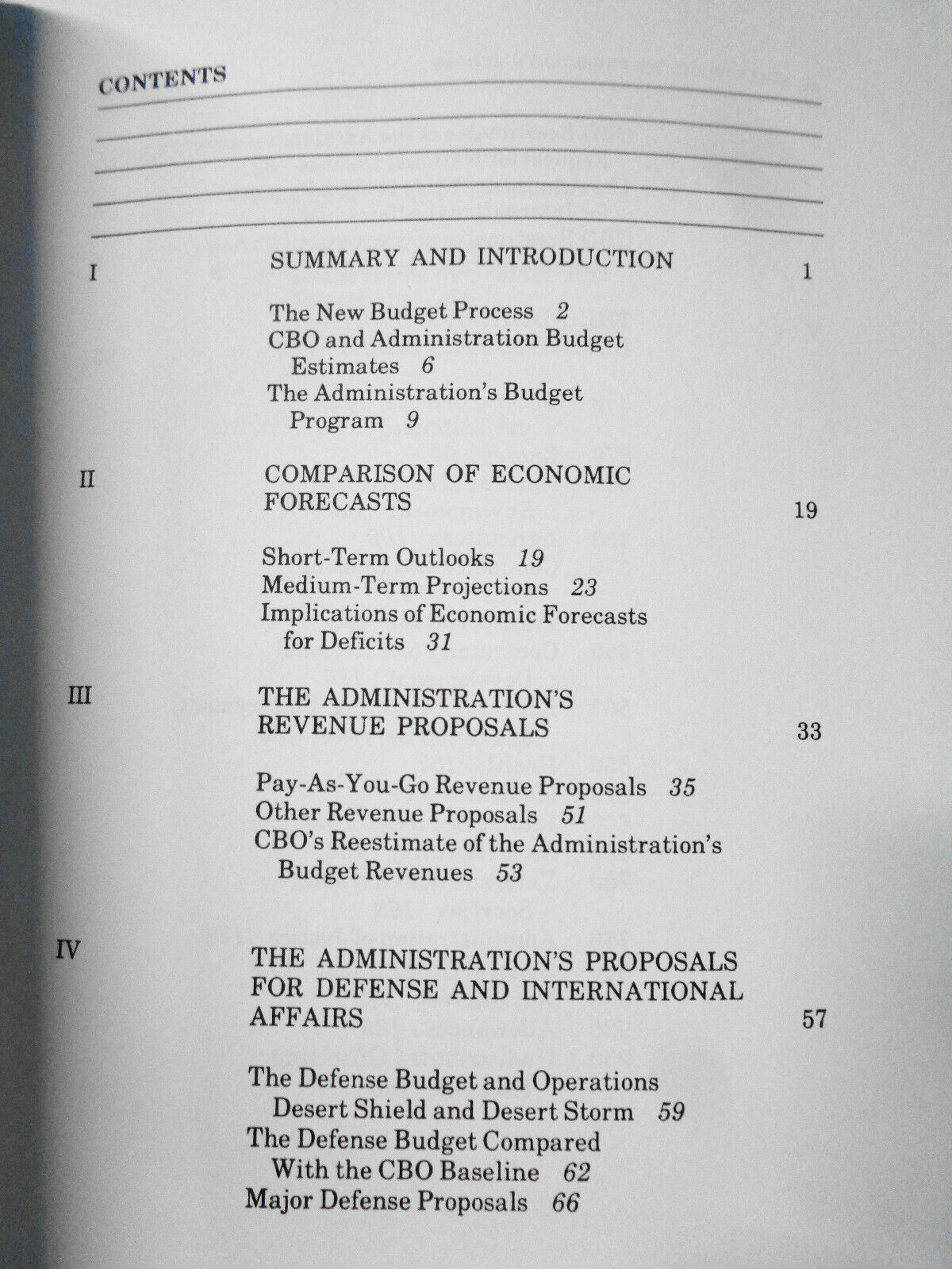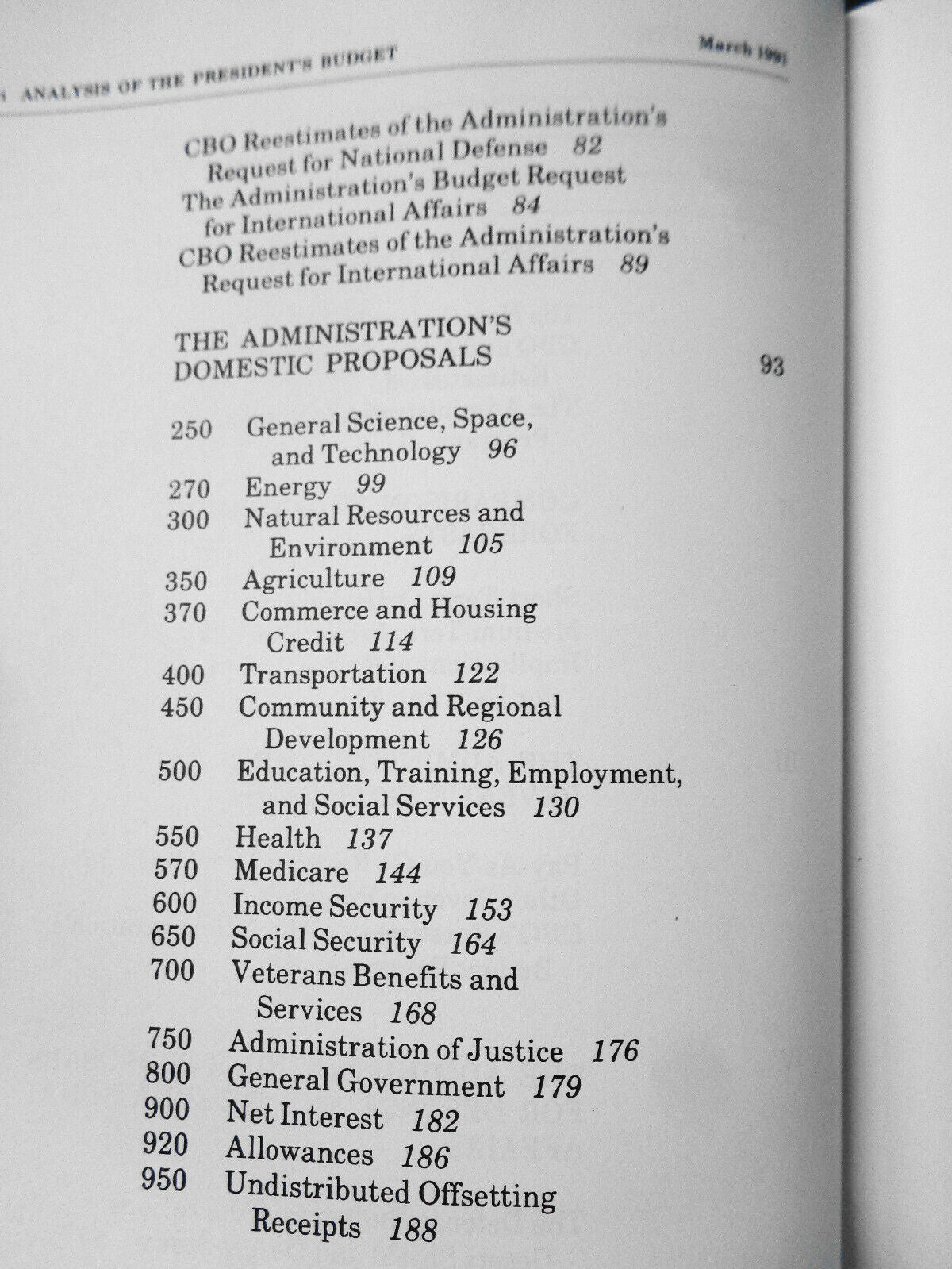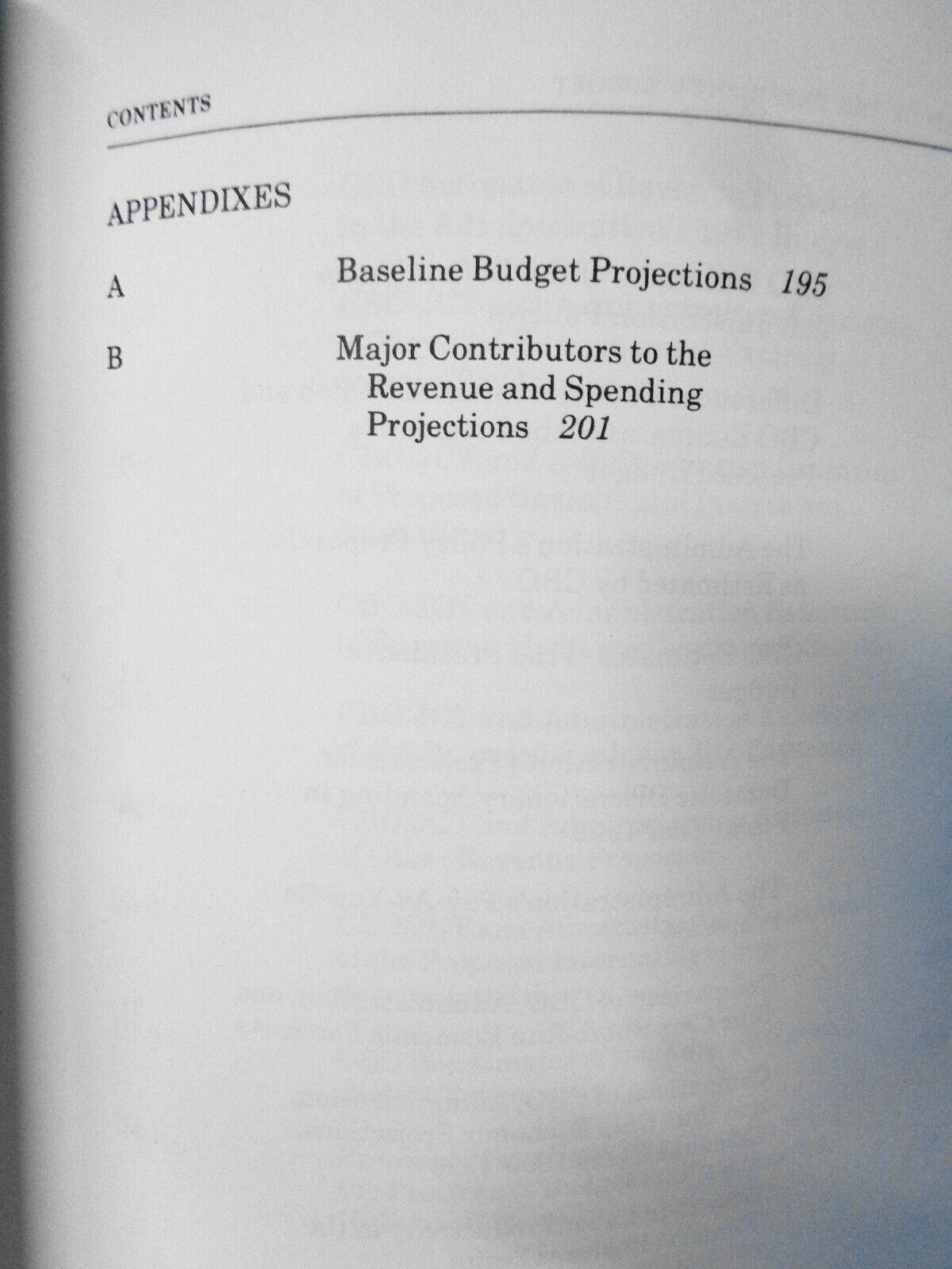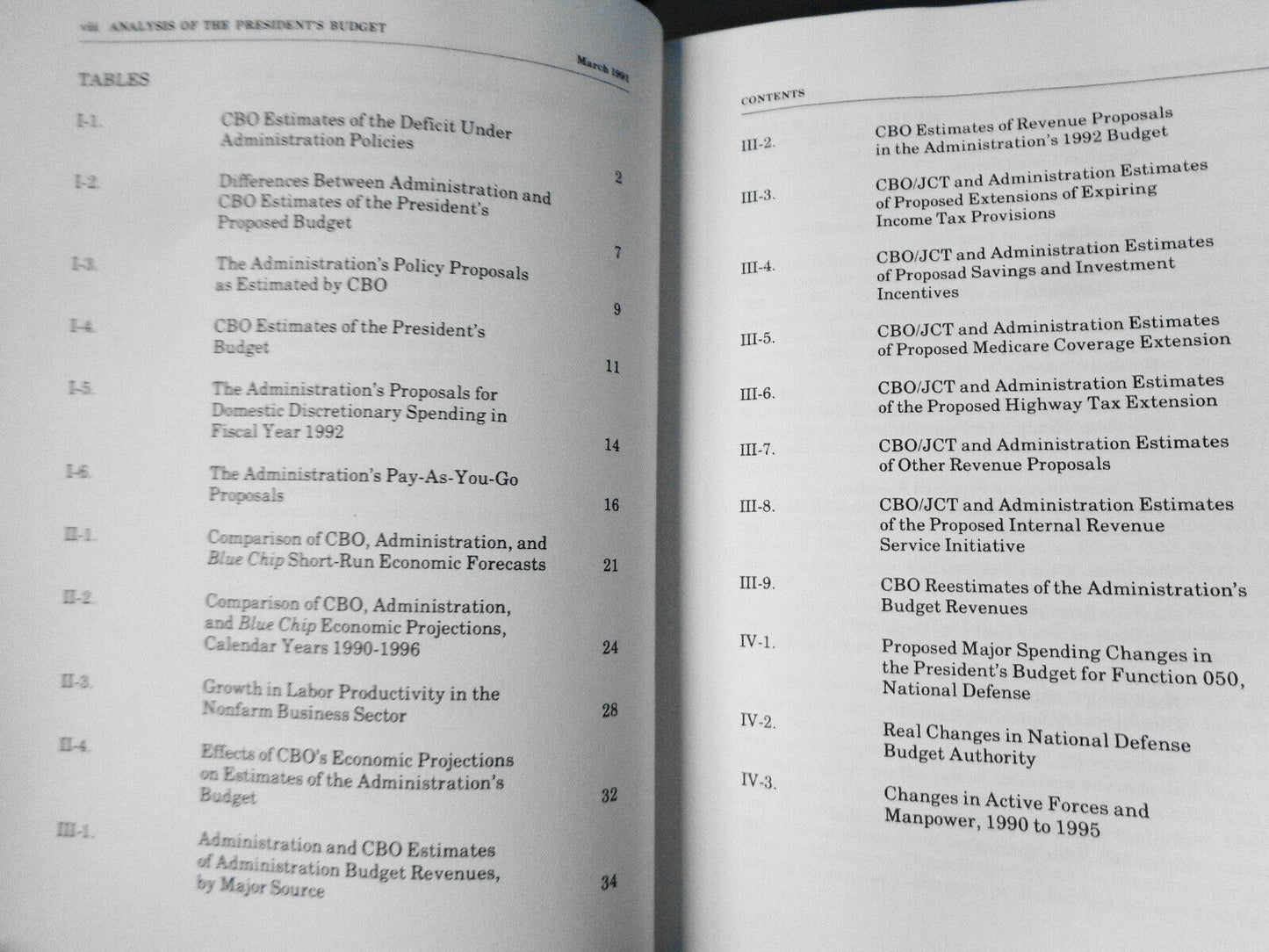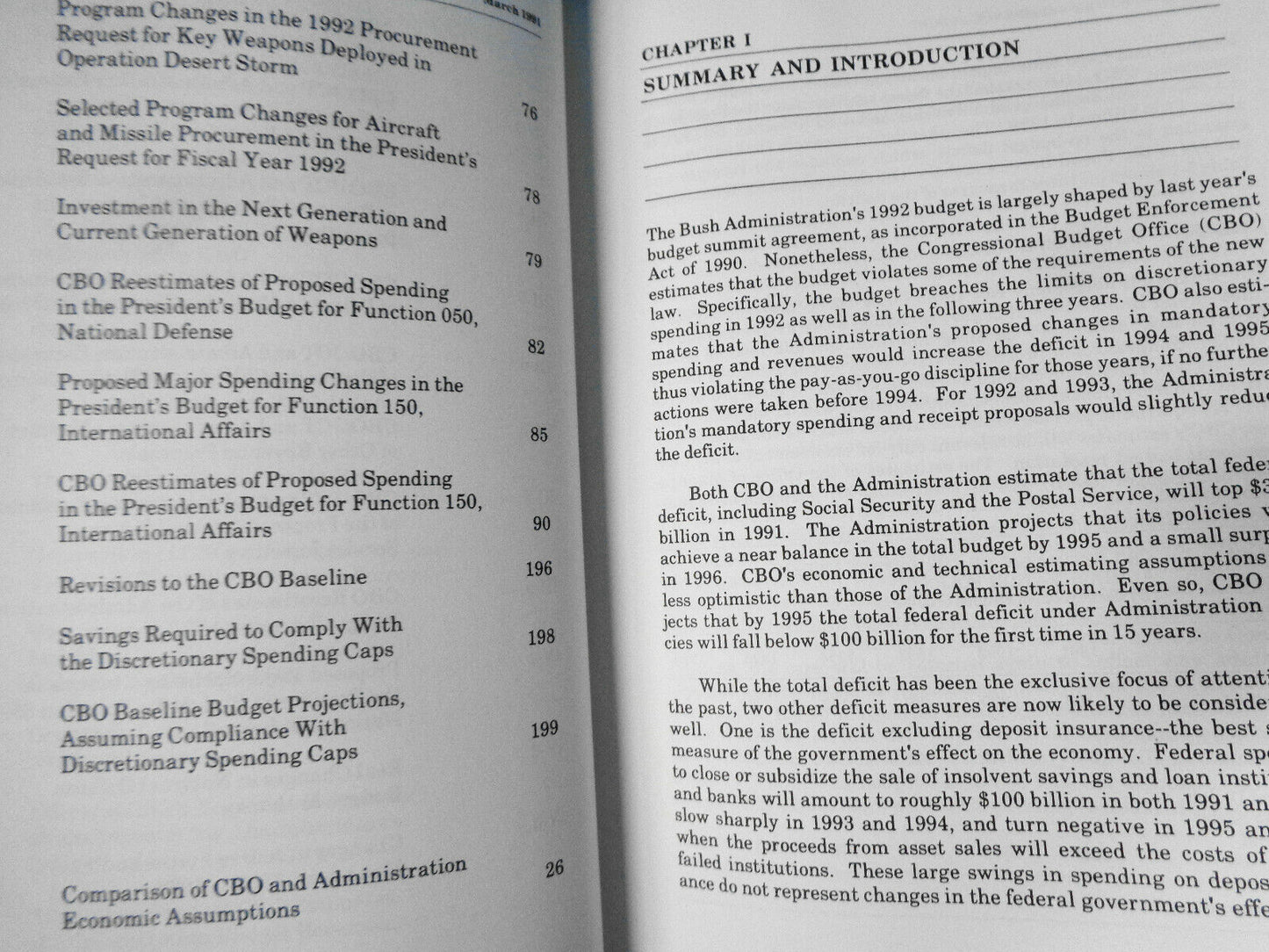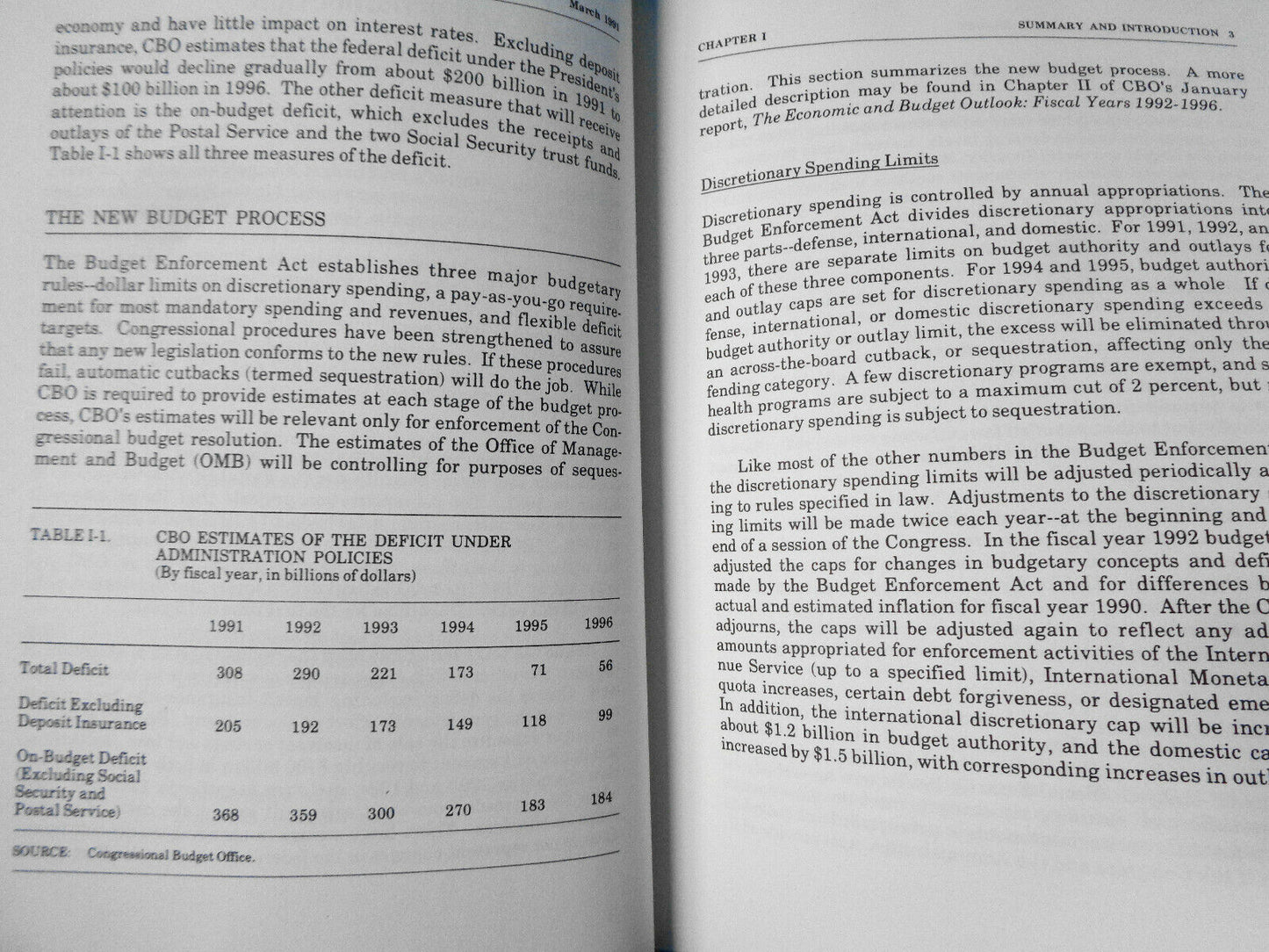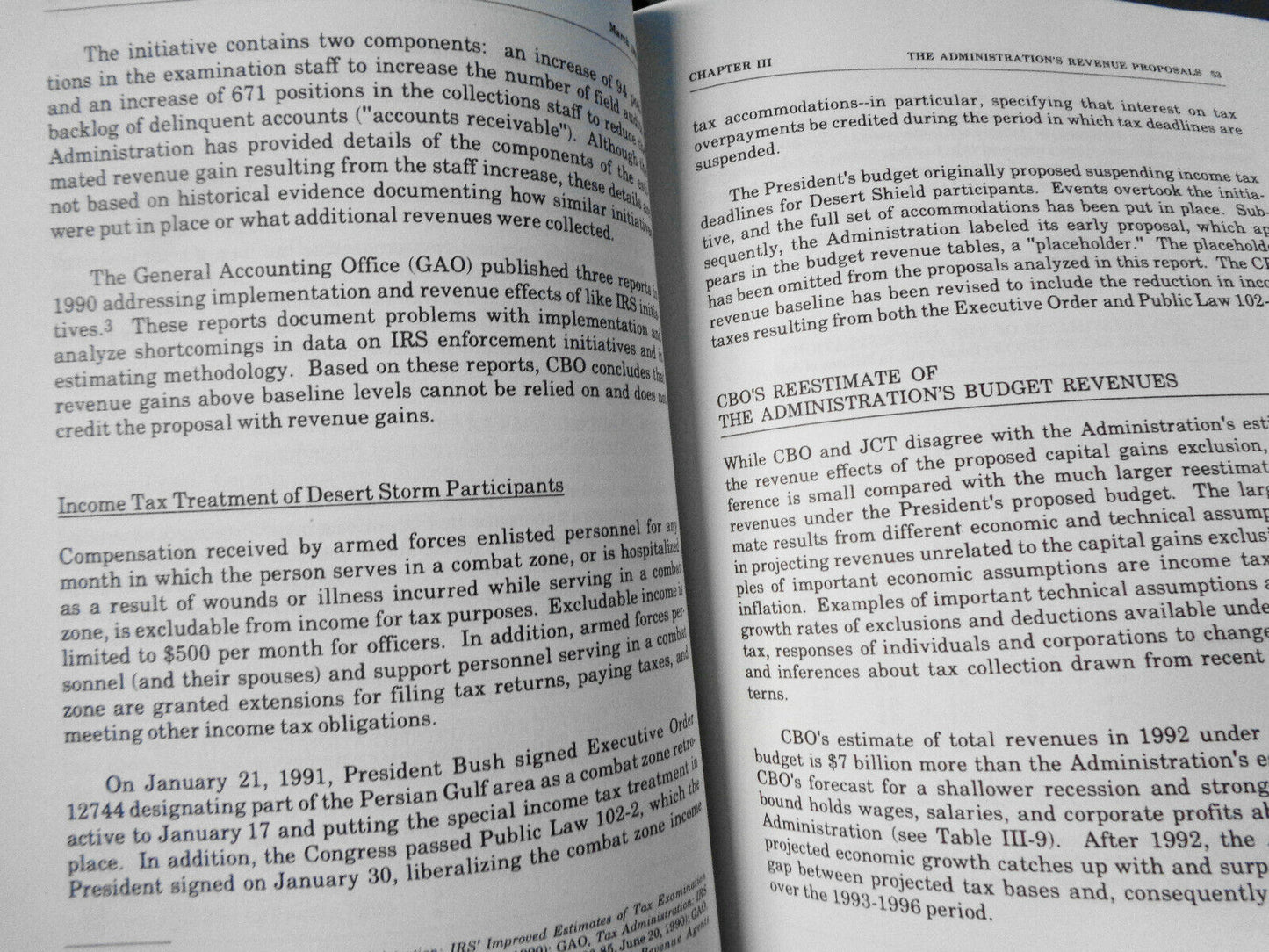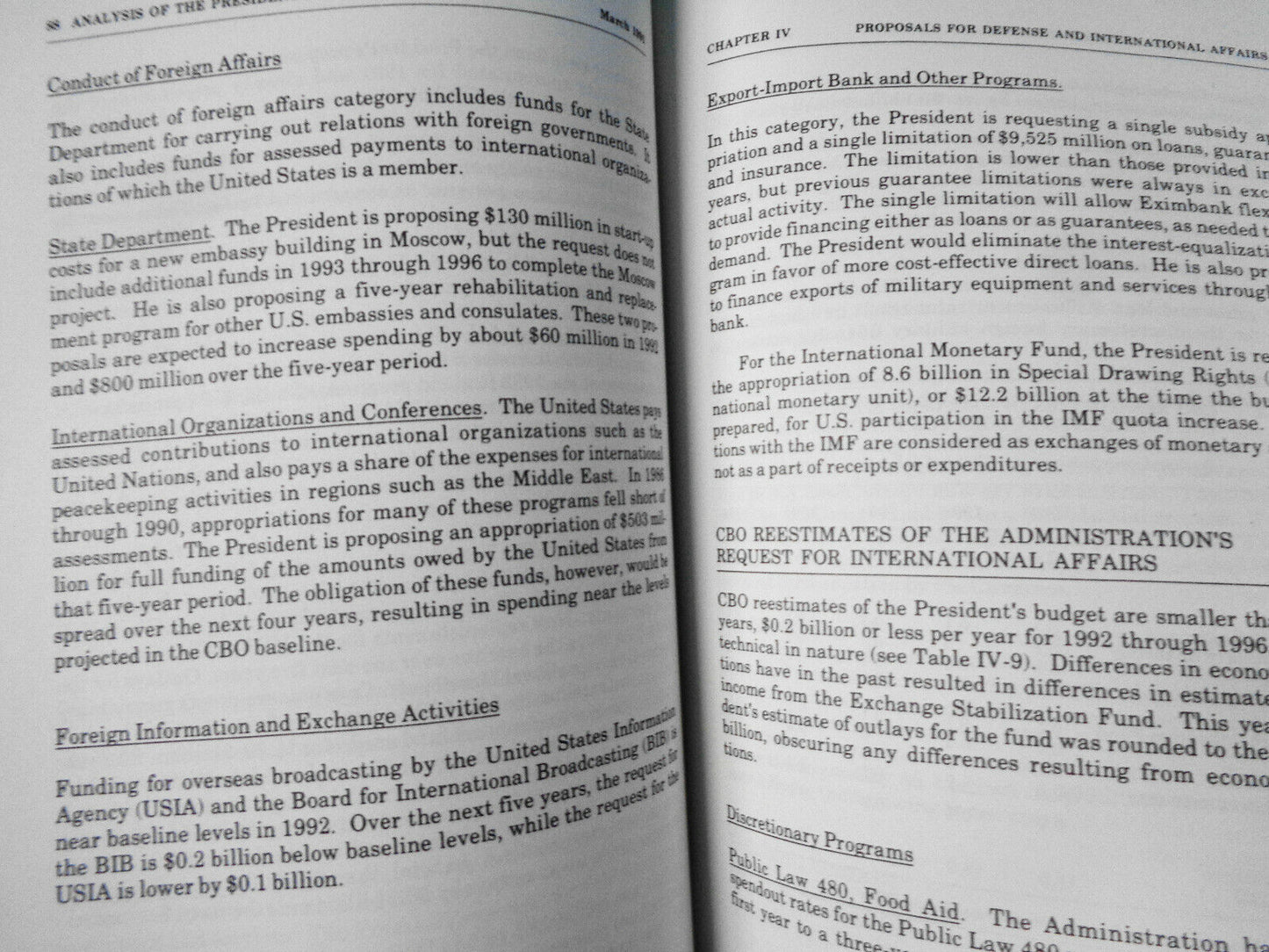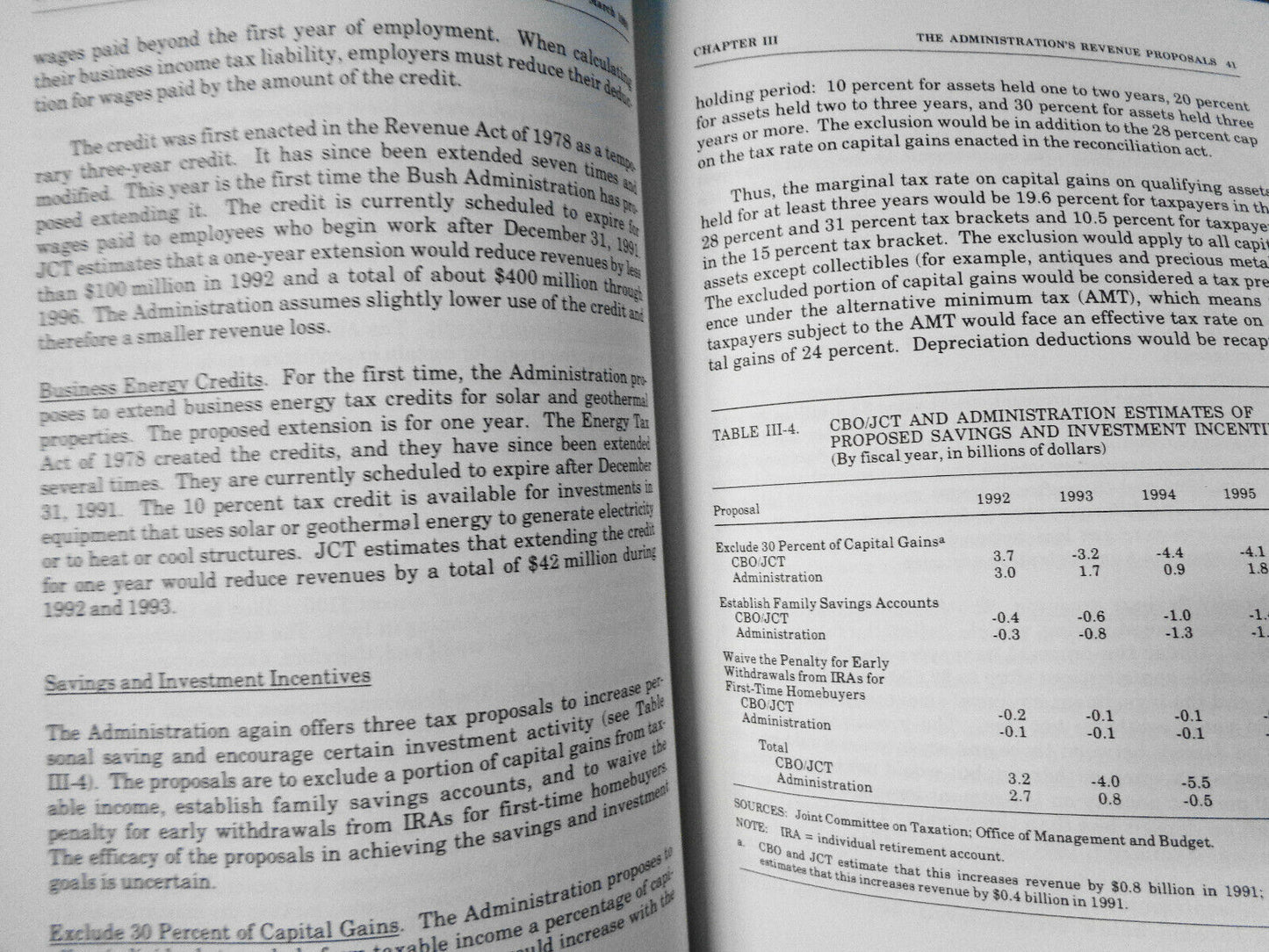JULIAN'S BOOKS
An Analysis of the President's Budgetary Proposals for Fiscal Year 1992 - CBO
An Analysis of the President's Budgetary Proposals for Fiscal Year 1992 - CBO
Couldn't load pickup availability
An Analysis of the President's Budgetary Proposals for Fiscal Year 1992
Washington, D.C: Congress of the United States, Congressional Budget Office, 1991. First Edition. Softcover; First Printing.
March 1991 edition. All Authors / Contributors:CONGRESSIONAL
BUDGET OFFICE (U S CONGRESS) WASHINGTON DC; Van de Water, Paul N.;
Arnold, Robert W.; Marcuss, Rosemary D.; Miller, Michael A.; Seagrave,
Charles E.; Sunshine, Robert A.; Ruffing, Kathy. Subjects; Economics and
Cost Analysis. Government and Political Science. *FEDERAL BUDGETS ; 4to
- 11" to 13" tall; 204 pages; Notes: "Prepared at the request of the
Senate Committee on Appropriations"--Cover. "March 1991"--Cover. "The
report discusses the President's policies in terms of changes from the
Congressional Budget Office (CBO) baseline budget projections for 1992
through 1996. It provides estimates of the budgetary impact of the
Administration's proposals using CBO's economic and technical estimating
methods"--P. iii. Description: x, 204 p. : ill. ; 28 cm. Abstract:The
Bush Administration's 1992 budget is largely shaped by last year's
budget summit agreement, as incorporated in the Budget Enforcement Act
of 1990. Nonetheless, the Congressional Budget Office (CBO) estimates
that the budget violates some of the requirements of the new law.
Specifically, the budget breaches the limits on discretiona ry spending
in 1992 as well as in the following three years. CBO also estimates that
the Administration's proposed changes in mandatory spending and
revenues would increase the deficit in 1994 and 1995, thus violating the
pay-as-you-go discipline for those years, if no further actions were
taken before 1994. For 1992 and 1993, the Administrati on's mandatory
spending and receipt proposals would slightly reduce the deficit. Both
CBO and the Administration estimate that the total federal deficit,
including Social Security and the Postal Service, will top $300 billion
in 1991. The Administration projects that its policies will achieve a
near balance in the total budget by 1995 and a small surplus in 1996.
CBO's economic and technical estimating assumptions are less optimistic
than those of the Administration. Even so, CBO projects that by 1995 the
total federal deficit under Administration policies will fall below
$100 billion for the first time in 15 years. While the total deficit has
been the exclusive focus of attention in the past, two other deficit
measures are now likely to be considered as well. One is the deficit
excluding deposit insurance--the best simple measure of the government's
effect on the economy. Federal spending to close or subsidize the sale
of insolvent savings and loan institutions and banks will amount to
roughly $100 billion in both 1991 and 1992, slow sharply in 1993 and
1994, and turn negative in 1995 and 1996, when the proceeds from asset
sales will exceed the costs of closing failed institutions.
Listed with ExportYourStore.com
Share
